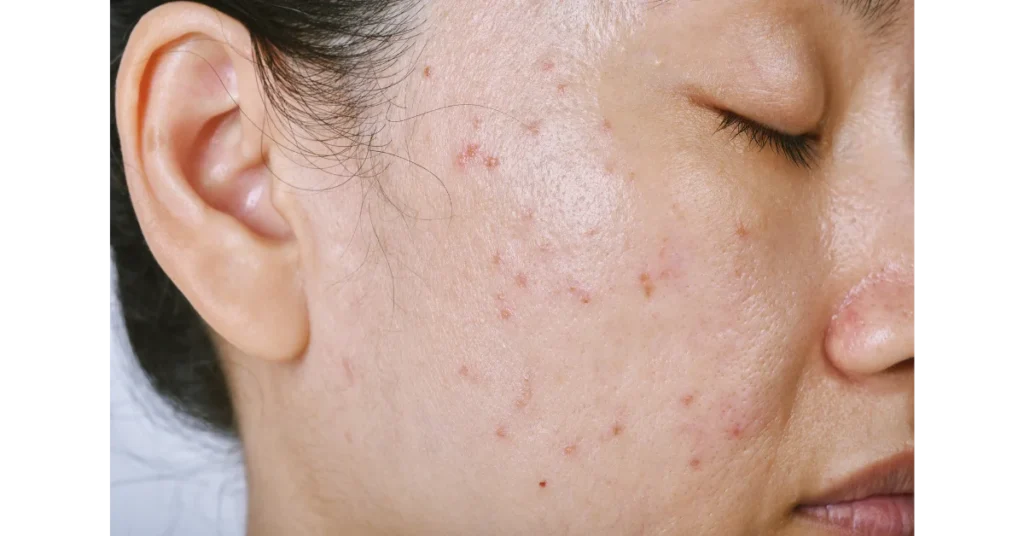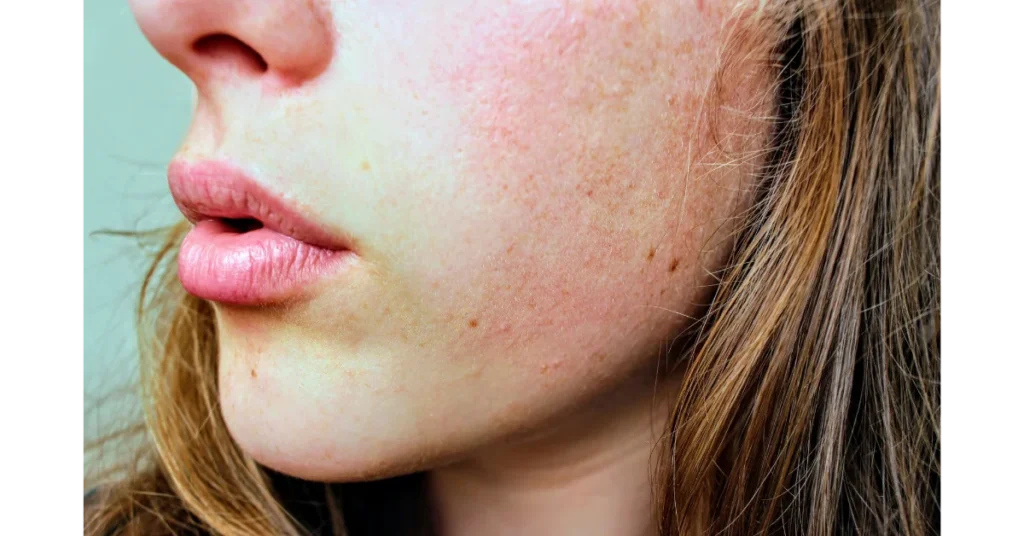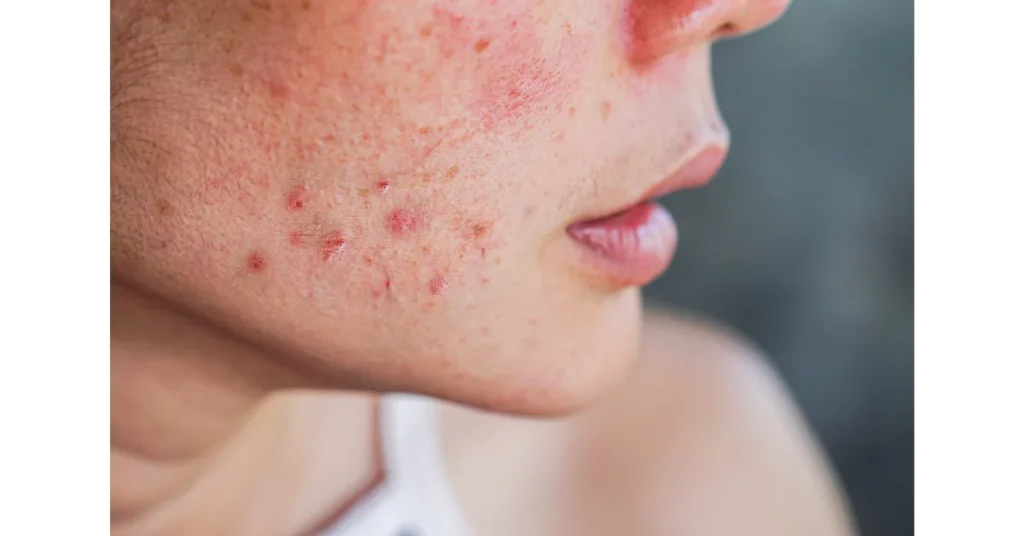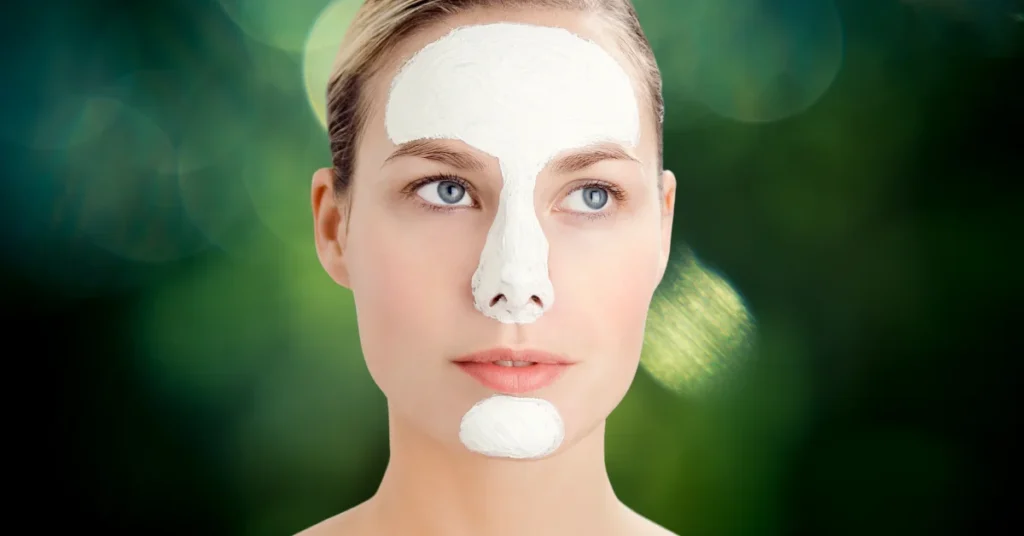Different Skin Types: How To Test / Characteristics / Causes and Conditions
Your skin is as unique as you are, and understanding its type is essential for crafting an effective skincare routine. Whether you have oily, dry, sensitive, normal, or combination skin, each type requires specific care to maintain its health and vitality.

Test Your Skin:
Determining your skin type is the first step towards achieving radiant and healthy skin. Here, are different types of test you can done at home to easily find your skin type.
- Visual Inspection test
- Blotting Paper Test
- pH test
- skin patch test
1. Visual Inspection test:
To find your skin type, start by cleansing your face with a gentle cleanser to remove any impurities. After patting your skin dry, wait for about an hour without applying any skincare products. Then, observe how your skin feels and looks:
- If your skin appears shiny and feels greasy, especially in the T-zone (forehead, nose, and chin), you likely have oily skin.
- Dry skin often feels tight, rough, or flaky, and may appear dull or scaly.
- Sensitive skin is prone to redness, itching, and irritation, especially when exposed to certain products or environmental factors.
- Normal skin feels balanced, neither too oily nor too dry, and generally has a smooth texture and even tone.
- Combination skin exhibits characteristics of both oily and dry skin, with an oily T-zone and drier cheeks.
2. Blotting Paper Test:
Another quick and simple way to assess your skin type is by using blotting paper. Follow these steps to perform the blotting paper test:

- Preparation: Start with a clean face. Wash your face with a gentle cleanser and pat it dry.
- Wait: Allow your skin to settle for about an hour without applying any skincare products. This step ensures that you get an accurate assessment of your skin’s natural state.
- Blotting Paper: Take a piece of blotting paper and gently press it against different areas of your face: the forehead, nose, cheeks, and chin. Hold the blotting paper against each area for a few seconds to absorb excess oil.
- Observation: After blotting each area, carefully examine the blotting paper to see how much oil it has absorbed. Here’s what to look for:
- Oily Skin: If the blotting paper appears saturated with oil and translucent, especially in the T-zone (forehead, nose, and chin), you likely have oily skin.
- Dry Skin: If the blotting paper does not pick up much oil and your skin feels tight or dry after blotting, you likely have dry skin.
- Combination Skin: If the blotting paper picks up oil mainly from the T-zone but less from the cheeks, you likely have combination skin.
- Normal Skin: If the blotting paper picks up minimal oil and your skin feels balanced after blotting, you likely have normal skin.
- Sensitive Skin: While the blotting paper test primarily assesses oiliness, those with sensitive skin may still notice oil on the paper but may also experience redness or irritation after blotting.
3. pH Test:
Use pH strips or a pH-testing device to measure the acidity or alkalinity of your skin’s surface. Here is the step-by-step guide on how to use the ph strips or device to test your skin.
- Cleanse your face with a gentle cleanser and pat it dry with a towel.
- If you’re using pH strips, tear off a small strip from the roll. OR If you’re using a pH-testing device, ensure it’s calibrated and ready for use according to the manufacturer’s instructions.
- Choose a representative area of your face to test, such as the forehead, cheek, or jawline.
Tip
Avoid to perform this test on the areas with visible irritation, wounds, or active breakouts.
- Gently press the pH strip against the selected area of your skin, ensuring it makes good contact with the surface. OR If you’re using a pH-testing device, follow the device’s instructions for obtaining a skin sample.
- Allow the pH strip or device to absorb moisture from your skin for the specified amount of time (usually a few seconds to a minute).
- After the designated time, compare the color of the pH strip or the numerical reading on the device to the provided pH scale.
- A pH level of around 4.5-5.5 indicates balanced skin, while lower pH levels may indicate oily or acne-prone skin, and higher pH levels may indicate dry or sensitive skin.
Keep track of the pH levels recorded for each area of your face to identify any variations in skin across different regions. Use the results of the pH test to tailor your skincare routine to better suit your skin’s specific needs. For example, if you have oily skin with a lower pH level, you may benefit from oil-controlling or acne-fighting products.
4. skin patch test:
Apply different skincare products or ingredients to small patches of skin in different areas of your face and observe how your skin reacts over time. This can help identify sensitivities or specific concerns.
Common Characteristics of Each Type:
It’s essential to understand the fundamental differences that distinguish one skin type from another. From oily to dry, sensitive to normal, each skin has its own unique set of traits and needs. By recognizing these common characteristics, you can better identify your skin and tailor your skincare routine accordingly for optimal results and a radiant complexion. Let’s explore the distinct features of each skin type in detail.
Oily Skin:
Oily skin is often the result of overactive sebaceous glands, which produce excess oil. Common characteristics of oily skin include:
- Enlarged pores
- Persistent shine
- Prone to acne and blackheads
- Makeup may slide off easily

Causes of Oily Skin:
Several factors contribute to oily skin, including genetics, hormonal fluctuations, diet, stress, and skincare habits. Hormonal changes during puberty, menstruation, or pregnancy can trigger increased sebum production, leading to oily skin.
Dry Skin:
Dry skin lacks sufficient moisture and may feel tight, rough, or flaky. Key characteristics of dry skin include:
- Tightness or discomfort, especially after cleansing
- Rough or scaly texture
- Fine lines and wrinkles may appear more prominent
- Dullness or lack of radiance

Causes of Dry Skin:
Dry skin can be caused by various factors, including genetics, aging, harsh weather conditions, hot showers, and certain skincare products. A compromised skin barrier can also contribute to moisture loss, leading to dryness and sensitivity.
Sensitive Skin:
Sensitive skin is easily irritated by external triggers, resulting in redness, itching, or inflammation. Common characteristics of sensitive skin include:
- Redness or flushing
- Itching or burning sensation
- Prone to allergic reactions or contact dermatitis
- Reacts to certain skincare products or environmental factors

Causes of Sensitive Skin:
Sensitive skin can be genetic or develop over time due to factors such as allergies, exposure to irritants, harsh skincare products, or underlying skin conditions like rosacea or eczema. Environmental factors such as sun exposure, pollution, and climate changes can also exacerbate sensitivity.
Normal Skin:
Normal skin is well-balanced and generally free from major skin concerns. Key characteristics of normal skin include:
- Smooth texture
- Even tone without redness or discoloration
- Minimal pores
- Rare occurrences of acne or sensitivity

Causes of Normal Skin:
While genetics play a significant role in determining skin type, maintaining a healthy lifestyle, proper skincare routine, and sun protection can help maintain normal skin.
Combination Skin:
Combination skin features a mix of oily and dry areas, typically with an oily T-zone (forehead, nose, and chin) and drier cheeks. Common characteristics of combination skin include:
- Oily T-zone with enlarged pores
- Dry or normal cheeks
- Prone to acne and blackheads in the T-zone
- Makeup may wear off unevenly

Causes of Combination Skin:
Combination skin can be influenced by genetics, hormonal fluctuations, climate, and skincare habits. Overactive sebaceous glands in the T-zone and insufficient moisture in other areas contribute to the combination type of skin.
Basics of Skincare:
Regardless of your skin type, a basic skincare routine should include cleansing, moisturizing, and sun protection:
- Cleansing: Use a gentle cleanser suited to your skin type to remove dirt, oil, and impurities without stripping away natural oils.
- Moisturizing: Hydrate your skin with a lightweight, non-comedogenic moisturizer to maintain its moisture barrier and prevent dryness.
- Sun Protection: Shield your skin from harmful UV rays by applying a broad-spectrum sunscreen with SPF 50 or higher daily, even on cloudy days.
OUTLOOK:
By identifying your skin type and addressing its unique characteristics and concerns, you can achieve a healthy, radiant complexion. Remember to consult with a dermatologist for personalized skincare recommendations and treatments, especially if you have specific skin conditions or concerns.






